By: Susan Sprout
Find out what’s underfoot with NPC member and environmental educator, Susan Sprout! Catch up on past issues of Underfoot: Introduction & Bloodroot, Trout Lily & Coltsfoot, Blue Cohosh & Dutchman’s Breeches, Ground Ivy & Forget-Me-Nots, Goldthread & Wild Ginger, Common Mullein & Sweet Woodruff, Aniseroot & Butterfly Weed, Myself , Jewelweed & Soapwort, American Pennyroyal & Great Lobelia.
Boneset
Boneset or Thoroughwort is a native perennial plant standing about 60 inches tall. It can be found growing in moist areas from Canada to Florida, and west to Texas and North Dakota. With a flat-topped cluster of 15 to 20 florets of white feathery blossoms at the top of its hairy stem, it may resemble a lot of plants blooming now. But, one of the totally cool things about Boneset is its long, lance-shaped leaves, a characteristic reflected in its species name perfoliatum. Leaves on the opposite sides of the stem grow together so the stem looks like it has pierced through them…perfoliate…through the leaves!
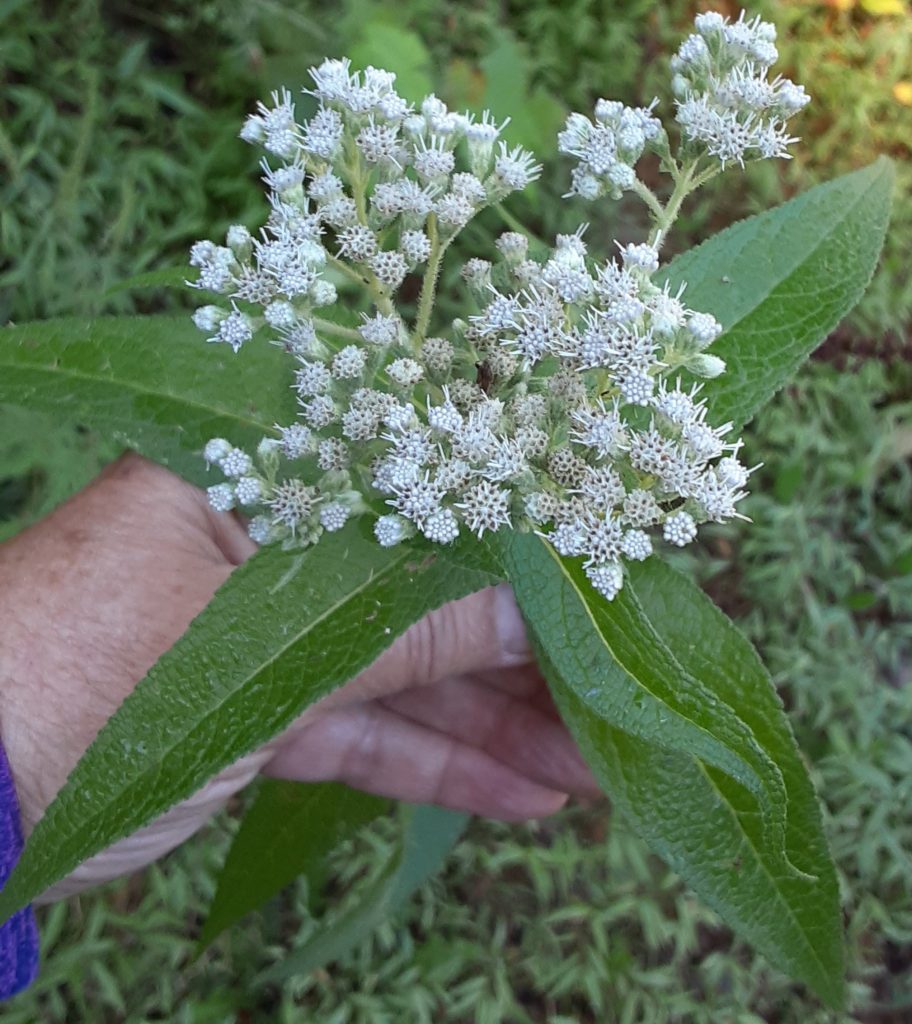
This was a very important identifying feature for Native Americans and others who used the plant medicinally for severe body aches, coughs, and fevers. If they gathered another plant closely resembling Boneset, but lacking perfoliate leaves, it could be toxic and poisonous.
One toxic plant strongly resembling Boneset, except for its leaves, is White Snake Root which affects cows eating it with “trembles” and the people drinking their milk with milk sickness, the poisoning that killed Nancy Hanks Lincoln and a lot of other early settlers.
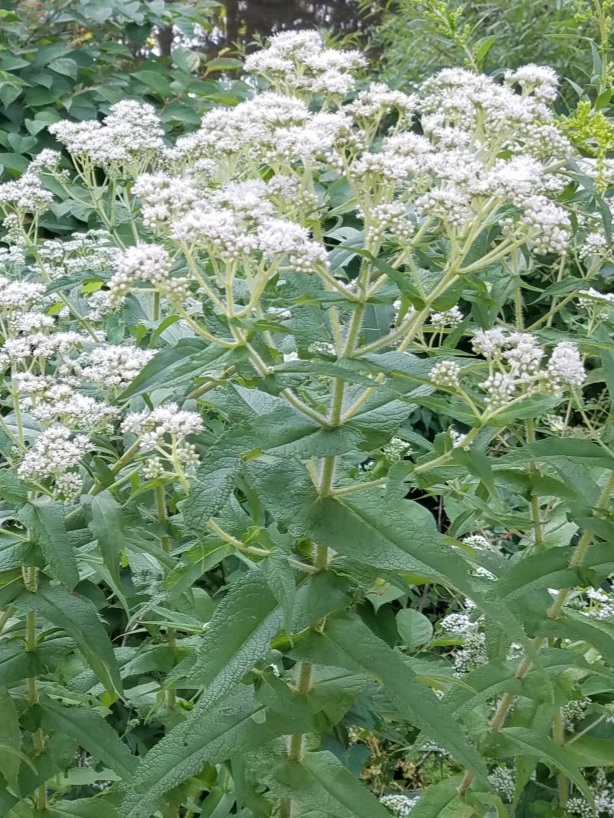
Boneset actually got its common name from the Breakbone Fever that ravaged the country during the 19th and 20th centuries. A bitter brew made of the dried leaves and flowers provided effective relief from the intense pain likened to that of a broken bone.
Today, we know this virus as causing Dengue fever, spread by female mosquitos. Modern medical research verifies chemicals in Boneset strengthen the immune system, interfering with viral replication, and protecting cells from virus infection.
Common Ragweed
Now is the time for all good people to come to the aid of their… aaahh-choo…noses!
This time of year, one hay fever culprit that puts on a nasal assault is our native plant, Ragweed. During its blooming season, one plant can disperse a billion grains of pollen into the air. The pollen is very light and can travel hundreds of miles into areas without the plant. This seems unlikely because Ragweed is found in every state and Canada. It was introduced to Europe about 100 years ago and has resulted in the allergic desensitization of the European population. (Well, they gave us burdock!)
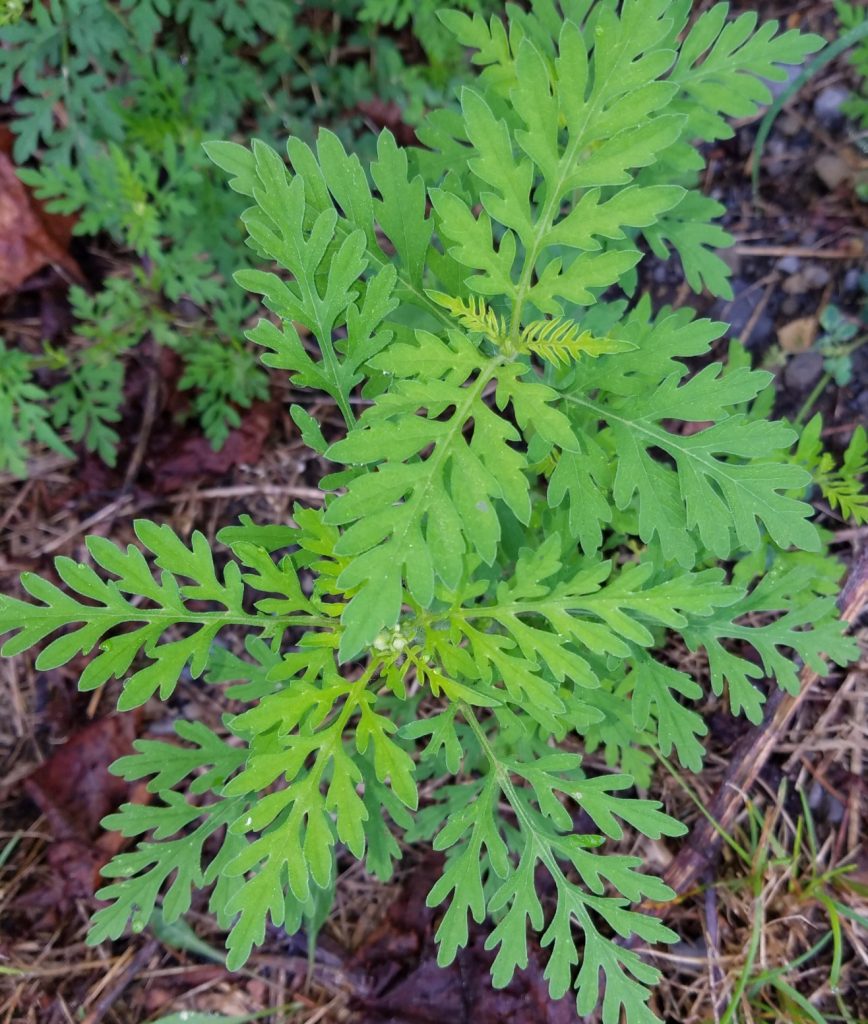
Learn what blooming ragweed looks like so you can recognize its inconspicuous greenish flowers before they send out pollen! The highest pollen levels are shortly after dawn in rural areas and peak between 10 and 3 in urban areas. Goldenrod species get blamed for most of the pollen problems because they are so obviously blooming with their gorgeous yellow flowers all over the landscape. But, ragweed pollen carries one of the strongest allergens internally and is coated with cone-shaped needles externally. Once in your nose, they penetrate and hang on!
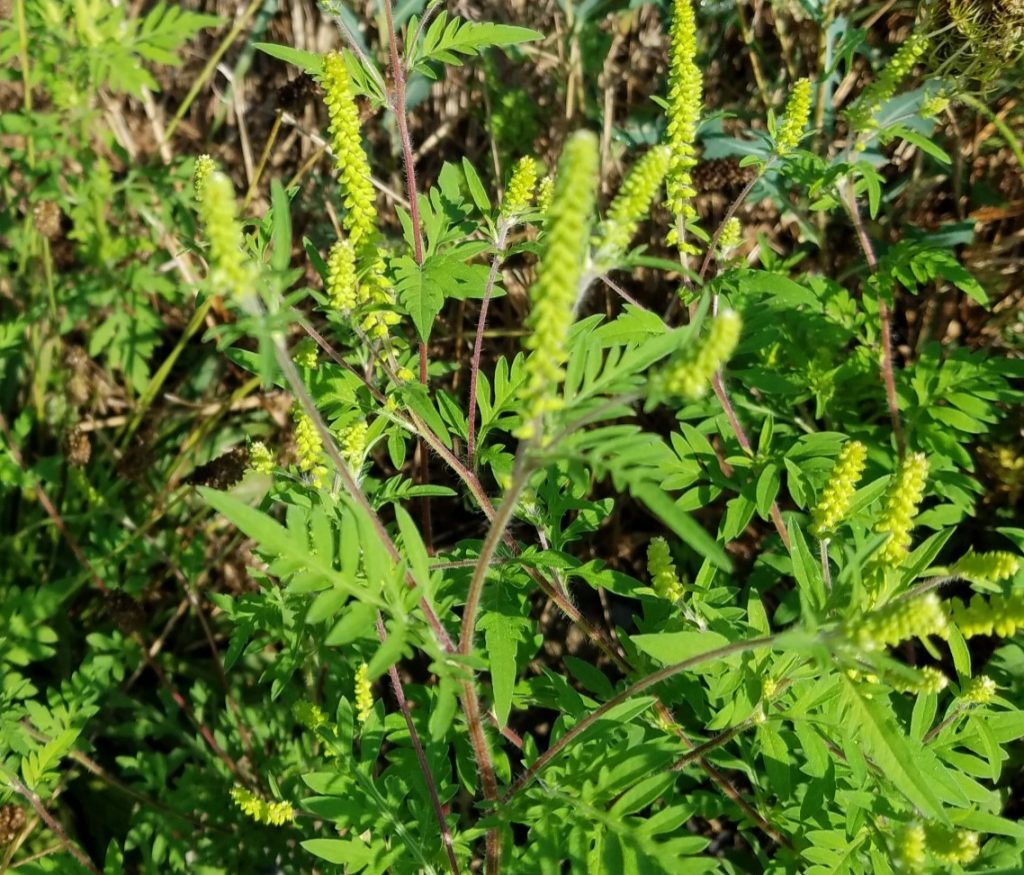
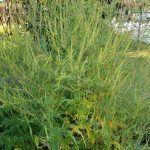
Goldenrod pollen is round, smooth, and dispersed by rainfall, so it doesn’t travel far. If you are in the 10 – 20 percent of people who suffer from Ragweed allergies, you may want to check your property for the plant. Look for its toothed leaves low to the ground or a mature plant over three feet tall. Wear a mask when you cut it down. Gloves and social distancing may be appropriate, too, as it can cause contact dermatitis!

